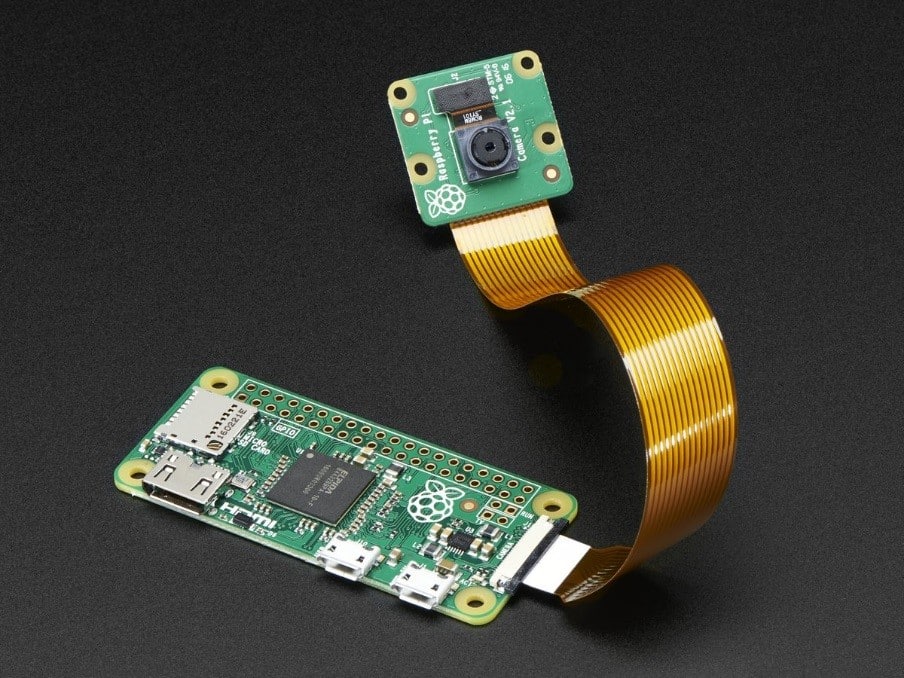Evolution of Raspberry Pi Zero in 3 Versions

(The original Chinese version of this article is written by Hsiang-yang Lu and published on MakerPRO)
In November 2015, Raspberry Pi foundation released the $5 Raspberry Pi computer, Pi Zero. Once you bought the MagPi magazine Issue 40, you could get one Raspberry Pi Zero for free. It did make a sensation, and even some people sold the Pi Zero on the Internet. The price could be USD$ 100, 20 times higher than the original price.
However, after the sensation, everyone was back to the rationality. Compared with other Raspberry Pi boards which are between $20 and $35, Pi Zero is still the low-end board. Even though, Pi Zero is still quite suitable for some basic applications.
From version 1.2, Pi Zero only cost $5
Since the first release of Pi Zero, the PCB layout design has been 1.2 version already. It’s hard to find any information related to 1.0 and 1.1 version. If you are interested in the PCB, you can download the files and understand the circuit design of Pi Zero 1.2.
However, the website only provides equivalent circuit diagrams, instead of circuit layout. If you want to know more about circuit layouts, you can click the link and check the mechanical drawing, like the picture below.

Pi Zero is at the low price, but some basic functions originally equipped on Raspberry Pi are hidden in Pi Zero. Users need to manually weld the component to get the function, such as GPIO pins. Moreover, some functions are even removed in this version, such as DSI connector, so that Pi Zero cannot access touch panels.
Due to the low price, the fewer functions are acceptable for most users. A 5-dollar board is not capable of competing with Raspberry Pi, which cost from $20 to $35.
1.3 Version Supports to Access Cameras at the Same Price
In May 2016, six months after the official release of Pi Zero, Raspberry Pi foundation launched 1.3 version of Pi Zero. The key feature was to support camera serial interface (CSI connector) which used to be equipped on high-end Raspberry Pi. Thus, Pi Zero began to be able to connect with cameras.

Indeed, numerous Raspberry Pi users choose to add Raspberry Pi cameras to have various applications. It was a shame that Pi Zero 1.2 cannot access cameras, but 1.3 supports the function again.
However, Pi Zero 1.3 still does not support DSI interface. Per the general usage, Raspberry Pi users use CSI interface more frequently than DSI interface. That might be the reason why Pi Zero 1.3 regained the CSI support first.
Pi Zero 1.3, which supports CSI interface, still costs $5. It is obvious that people would rather to buy 1.3 than 1.2 as the 2 versions are at the same price.
Pi Zero W, supporting Wi-Fi and BLE, priced at $10
Raspberry foundation released Pi Zero W in February 2017. The whole design of Pi Zero W is similar to Pi Zero 1.3 but supports Wi-fi and Bluetooth. Wi-Fi supports IEEE 802.11n, and Bluetooth supports 4.x, including BLE (Bluetooth Low Energy).

Pi Zero W still does not support DSI connector but supports CSI connector only. The price is also higher, $10, because of the wireless communication chip. Pi Zero W utilizes the same wireless communication chip as RPi 3 Model B, i.e. Cypress’ CYW43438. So, we can envision that Raspberry Pi foundation is planning to have the wireless communication capabilities as the basic equipment of Raspberry Pi computers.
Lastly, the interesting thing is that new official cases were available as soon as Pi Zero W was just released. There are 3 types of lid for users to choose. And, there are new distributors to sell Pi Zero, like ModMyPi in the UK, pi3g in Germany, Samm Teknoloji in Turkey, Kubii in France, Spain, Italy, and Portugal, Kiwi Electronics in Holland, Belgium and Luxemburg. So Pi Zero is supposed to go to America and Asia soon!

Have any other hardware development problems? Let TechDesign professional project managers provide the consultation for you!
Sign up to become TechDesign member and get the first-hand supply chain news.
More articles about Raspberry Pi:










